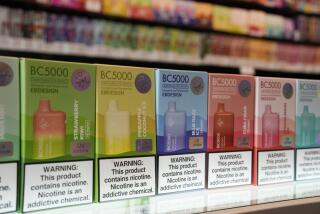FDA unfiltered
- Share via
For most of the last 15 years, the Food and Drug Administration’s authority to regulate tobacco has been either a thwarted promise or a fitful threat, depending on your point of view.
It has been pressed by anti-smoking crusaders and public health groups, put on hold by the Supreme Court and beaten back repeatedly by the tobacco industry and its political allies. Last year, the latest such proposal was left for dead after President Bush threatened he would veto a measure, passed by the House of Representatives, if it made its way to his desk.
But on June 22, a political resurrection occurred in Washington, D.C.: Flanked by lawmakers, anti-smoking advocates and even a tobacco industry executive, President Obama (himself a smoker who’s struggled to quit) signed into law a measure giving the FDA all the authority over tobacco that it has periodically sought, and more. That’s a measure not only of the doggedness of some lawmakers, but how the American landscape has changed for the makers of tobacco products.
Roughly one in five American adults still smokes cigarettes -- down from a pinnacle of 40% in 1965. Most of the nation’s workplaces, public buildings and restaurants no longer allow smoking. Though an estimated 1,100 kids take up smoking every day, tobacco has neither the Hollywood glamour nor ease of access it once did for those under 18. Even tobacco farmers are a vanishing breed, with many states using funds from a $206-billion legal settlement with the tobacco industry to buy them out of the business.
Tobacco use, estimated to kill 443,000 Americans and cost $193 billion in lost productivity and added healthcare costs every year, is something that fewer and fewer politicians dare defend.
See page E3 for an analysis of the new law and five perspectives about its likely impact.
More to Read
Sign up for Essential California
The most important California stories and recommendations in your inbox every morning.
You may occasionally receive promotional content from the Los Angeles Times.














